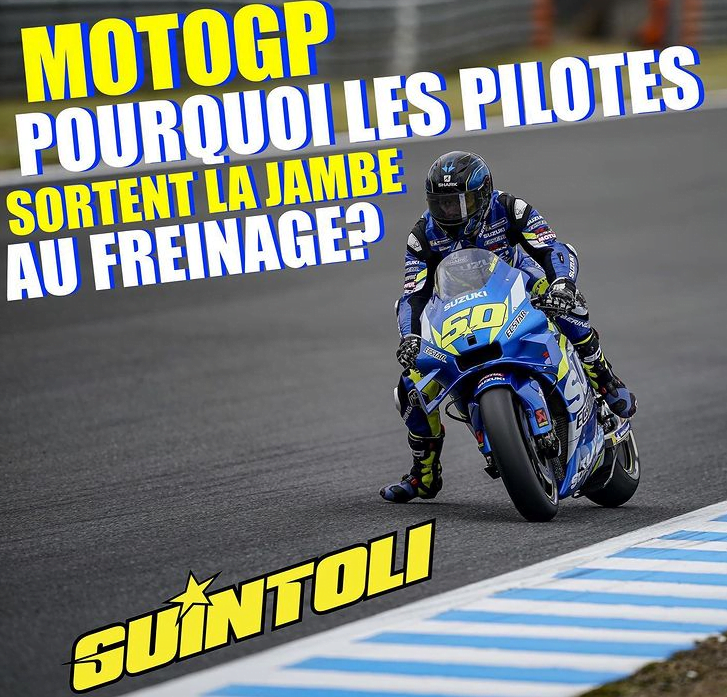Sylvain Guintoli is a recognized test rider at Suzuki and he enlightens us here on a technique today widely shared by all Grand Prix riders and beyond. Thus, braking like a lumberjack on a competition machine is done in the middle with one leg out of the toe clip, the boot even hugging the ground. It is a thoughtful, premeditated and assumed action. We are not in a desperate emergency, but rather in technique. Sylvain Guintoli explains…
Brake in MotoGP, today it means playing with your body and in particular a leg that has become a key element of an optimized and therefore successful slowdown. During the development of the category, not only have the motorcycles changed significantly over the past decades, but the riding style has also undergone constant adjustments in order to better meet technical requirements. So, we will lean up to our elbows to negotiate a turn. But before him, we use the leg to brake properly.
In sudden braking phases, drivers MotoGP use the leg by taking it out of the toe clip and pressing it squarely on the track. But what is the goal? Suzuki test rider, Sylvain Guintoli, explained the development on his YouTube channel. “ The fact that riders use the leg when braking is a direct result of improvements to the bike, tires and brakes. You have reached a point where the deceleration and G forces during the braking phase are so strong that the foot automatically slides out of the toe clip ».
Guintoli names Rossi as the precursor
« The first driver to discover that this could be an advantage was Valentino Rossi. He stuck his leg out before every turn, which many drivers imitated after a short time “, explained the 38-year-old pilot.
The Frenchman cites a number of advantages: “ Firstly, the center of gravity of the motorcycle shifts downward when braking, which improves braking stability. Secondly, when the leg is extended, the rider slides backwards, which on the one hand shifts the center of gravity rearward and on the other hand puts more weight on the outer footrest ».
« Another advantage is the higher air resistance, because the leg brakes with it, although this effect is only marginal. As a result, the motorcycle decelerates a little better, because the headwind stops the machine and the rider », explained the former World Champion WSBK.
As a third point, Guintoli lists an effect that physically relieves the pilot: “ In MotoGP, the body is exposed to very strong G forces. If the rider uses his leg to help him brake, the air resistance pushes him back so that his arms take some relief. Ultimately, the foot serves as an anchor and helps slow the motorcycle ».
Does this technique also apply to the amateur pilot? The tricolor is doubtful: “ the resulting advantage is very small. In MotoGP, marginal differences can be decisive, but an amateur pilot will not feel any difference until he reaches the absolute limit »Warns Guintoli.





